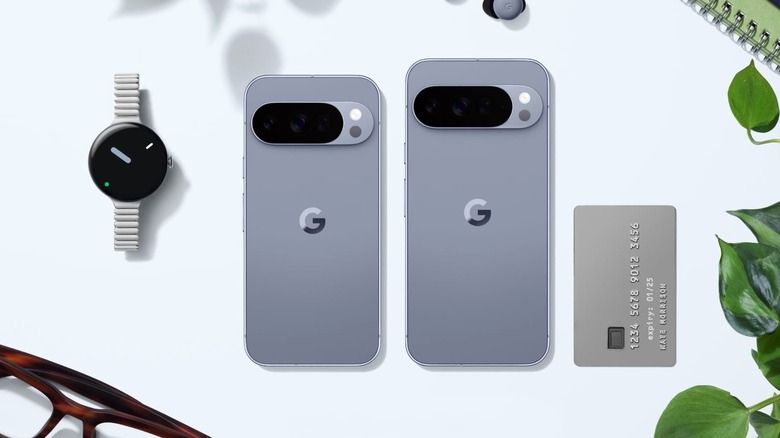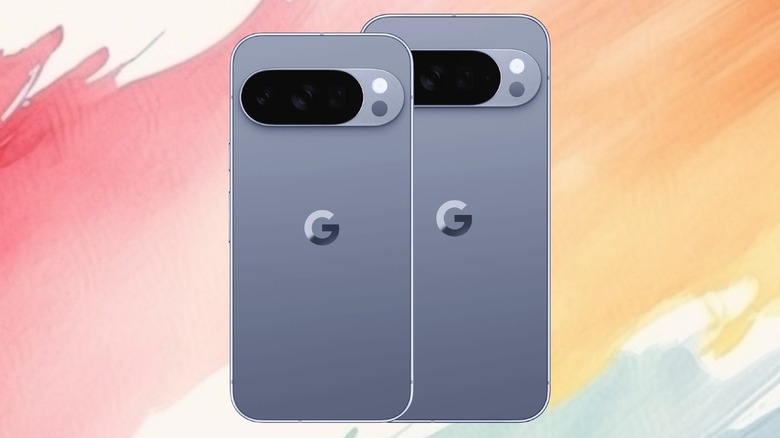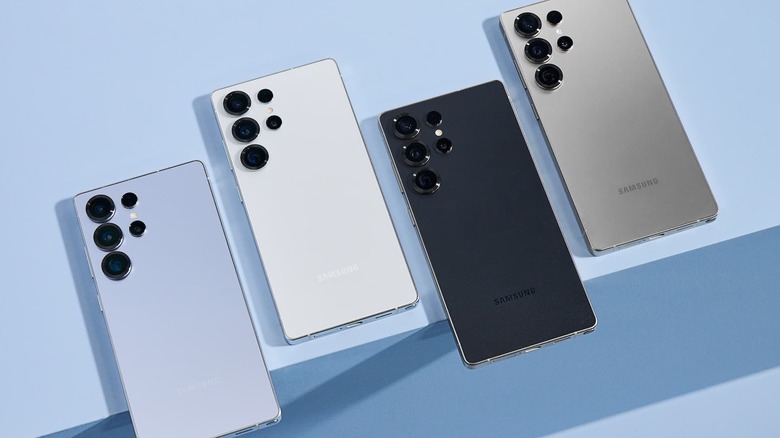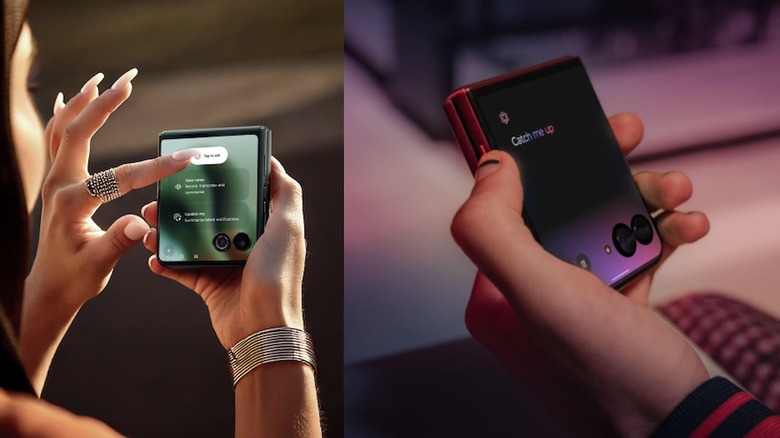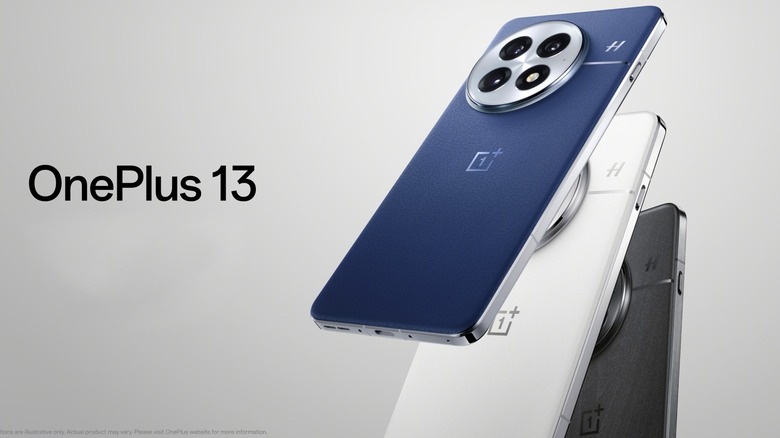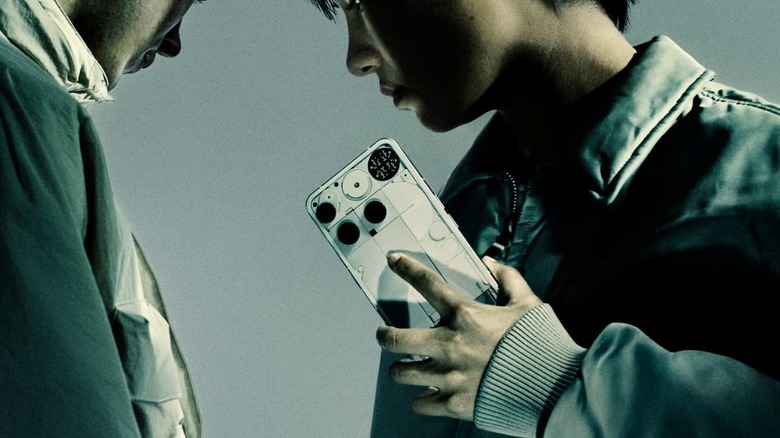Consider These 5 Android Phones Instead Of The iPhone 17
It feels like every time Apple unveils its latest iPhone, the world pauses. The new iPhone 17 is no different, arriving with all the fanfare and polished marketing we've come to expect. While it may seem like you should automatically upgrade, the smartphone market is more diverse and innovative than ever before, with Android manufacturers pushing boundaries in design, performance, and user experience.
This isn't to dismiss the iPhone 17 out of hand. It undoubtedly brings its own set of refinements and new features to face its own competition. However, other companies aren't just playing catch-up. In many crucial areas, they are leading the charge, often with features and capabilities that you won't find on an iPhone.
If you're a power user who demands top performance for gaming or intensive applications, there are Android phones for you. If photography is your passion, you'll find devices with camera setups that are even better than Apple's phones. And if battery life is your top priority, some Android flagships are setting new industry standards. Before you automatically reach for the latest iPhone, consider taking a moment to explore what else is out there. This article will guide you through five exceptional Android smartphones that are not just alternatives but top competitors to the iPhone 17.
Google Pixel 10 Pro XL
The Google Pixel 10 Pro XL outshines the base iPhone 17, thanks to its beefed-up hardware, better charging, and a big focus on advanced artificial intelligence features. One of the best things the Pixel pulls ahead with is its hardware, especially the memory. The Pixel 10 Pro XL comes with a whopping 16GB of RAM, which means you can multitask and get all those advanced AI functions that will make the phone feel much snappier. Meanwhile, the base iPhone 17 is sticking with just 8GB of RAM, and that's the absolute minimum you'd need for its Apple Intelligence features.
The Pixel 10 Pro XL is packing a Pro triple-rear camera system that includes a 50 MP wide, 48 MP ultrawide, and a 48 MP 5x telephoto lens. This setup lets you hit 100x Pro Res Zoom that uses AI diffusion models to artificially upscale faraway subjects with seriously impressive results. Also, the 10 Pro XL has a 42 MP selfie camera, which totally blows away the iPhone 17's 18 MP Center Stage front camera.
While our review of the Google Pixel 10 Pro XL did find that there was a bit too much AI, it's hard to deny how great this phone is. It's one of the first Android phones to support Qi2.2 magnetic wireless charging at up to 25W. For wired charging, it supports a blazing-fast 45W that can get you up to 70% battery capacity in about 30 minutes, which is great for any phone.
Samsung Galaxy S25 Ultra
The Samsung Galaxy S25 Ultra is not even a close competitor of the iPhone 17 when you look at the raw specifications. The S25 Ultra comes with the Snapdragon 8 Elite chip for Galaxy that's paired with a massive 12GB of RAM, which means multitasking and keeping a ton of apps open isn't going to slow you down one bit. You can't even compare it to the iPhone 17's simple Dual Fusion camera system, because the S25 Ultra is rocking a comprehensive Quad Camera setup.
The S25 Ultra has a ridiculously high-resolution 200MP main sensor for capturing incredible detail. That's backed up by a 50MP ultrawide lens for expansive shots, a 10MP 3x telephoto lens for portrait and mid-range zoom, and a powerful 50MP 5x periscope telephoto lens for getting up close and personal. This amazing combination of hardware is what makes the phone capable of up to 100x Space Zoom capabilities, which is an impressive feature, regardless of the phone.
Our review goes over the massive 6.9-inch Dynamic Amoled display. A major reason for this is its new anti-reflective coating, a true practical advantage over its competitors. Also, the S25 Ultra features the fully integrated S Pen stylus, and you should know that this is exclusive to the S25 Ultra. Samsung is also matching Apple's commitment to seven years of OS and security updates.
Motorola Razr Ultra
The Motorola Razr Ultra runs on the powerful Snapdragon 8 Elite processor and is equipped with a substantial 16GB of RAM. When you compare that to the base iPhone 17, which features the A19 chip and keeps just 8GB of RAM, you can see a massive difference. This huge memory advantage lets the Razr Ultra deliver flagship-tier performance and seamlessly handle any extensive multitasking you throw at it.
Beyond just the raw power, the Razr Ultra has a unique foldable form factor, which we liked in our review of this phone. The device comes with a highly practical 4.0-inch pOLED cover display that has a 3,000 nits peak brightness and a buttery-smooth 165Hz refresh rate. This external screen is so good that it lets you use apps and games without ever needing to flip the phone open.
The entire device is built for durability, with a titanium-reinforced hinge and tough Corning Gorilla Glass Ceramic on the external screen, so you don't have to baby it. When it comes to power management, the Razr Ultra packs a large 4,700mAh battery and significantly faster wired charging at 68W TurboPower and wireless charging at 30W. This dramatically cuts down on your downtime compared to the iPhone 17, which only reaches a 50% charge in 20 minutes using an optional 40W adapter.
OnePlus 13
The OnePlus 13 comes with a massive 6,000mAh silicon-carbon dual-cell battery, which gives it a lot of endurance. It supports a lightning-fast 100W wired fast charging, which can get you a full charge in about 36 minutes, and it even includes an 80W proprietary SuperVOOC charger in the box in some regions. This is in sharp contrast to the iPhone 17, which requires a separate 40W adapter (or higher) just to hit a 50% charge in 20 minutes.
We liked the phone's high performance in our review. The OnePlus 13 uses the powerful Qualcomm Snapdragon 8 Elite Mobile Platform, backed by up to 16GB of RAM. The base iPhone 17, on the other hand, is stuck with the A19 chip and has a smaller 8GB of RAM. In a benchmark test, the Snapdragon 8 Elite surpassed the iPhone's chips in multi-core performance and significantly outperformed them in graphics performance, which is a huge deal for mobile gaming.
Additionally, the OnePlus 13 has a higher level of durability, with an IP69 rating for water and dust resistance, while the iPhone 17 is only rated IP68. The OnePlus is a great phone if you want the reliability of Android but don't want to deal with the Galaxy and Google brand names.
Nothing Phone (3)
As we found in our review of the Nothing Phone 3, this is the solution for anyone tired of how gimmicky phones have gotten. It sets itself apart with a better raw battery capacity, a more flexible camera setup, and a distinct, minimalist software experience. One of the first and most practical hardware wins for the Nothing Phone 3 is that it comes with a big 5,150mAh silicon-carbon battery. On top of the sheer size advantage, the Nothing Phone 3 also supports quicker peak wired charging speeds, getting a full charge in about 60 minutes with an official Nothing charger.
When it comes to taking photos, the Nothing Phone 3 gives you a more robust sensor configuration right out of the box. It has a triple 50MP rear camera that includes dedicated Main, Ultrawide, and even a Periscope Telephoto lens and a high-resolution 50MP selfie camera. The iPhone 17's Dual 48MP Fusion rear system and an 18MP Center Stage front camera noticeably lack a dedicated telephoto lens for true optical zoom beyond a 2x crop of the main sensor. The Nothing Phone 3 also has a slightly larger 6.67-inch OLED display compared to the iPhone 17's 6.3-inch screen. Also, the Nothing Phone 3 promises five years of Android OS upgrades and seven years of security patches, and 12 to 16GB of RAM.
